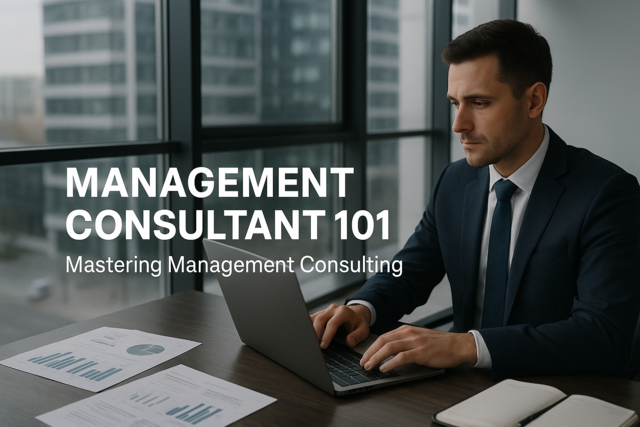How to Begin Having Effective Business Meetings
Effective meetings always start with great preparation and planning. Without establishing the groundwork and organizing, meetings can fall into chaos and confusion. The team accomplishes nothing when there is a lack of organization and structure to a meeting. Managers see meetings as unavoidable, and the best business solution is to streamline them to accomplish tasks and quickly make decisions.
"Winging It"
Dave was very excited. He just came up with a new software solution for the company and he had to share it. He quickly hurried to his colleague's desk and exclaimed, "Eureka! I have a solution! Let's get the team together and approve it."
Jack seemed a bit perplexed. "Whoa there cowboy, let's pull something together and review it. We can get the decision-makers together on a planned review later."
Unfazed by Jack's rebuff of his groundbreaking work, Dave replied, "I'm just going to wing it. It shouldn't hurt any decision on this amazing find."
Dave quickly assembled an impromptu meeting with the main board of the software company. He quickly stumbled into a sales pitch about his new software solution. He wrote a few notes on a white board, and created a handwritten drawing, trying to show the effect of the software. After several minutes of stumbling through a muddled explanation, most members of management seemed unimpressed. Finally, the meeting crashes to a halt when a senior level manager speaks up and asks, "Why are we here?"
1.1 Determine the Goal of the Meeting
All meetings should have a goal and a purpose to them. Without something to achieve or accomplish, the meeting has no clear objectives to it. A well-prepared meeting has a clear direction and goals; it has the right people in assigned jobs, and correct facilities to achieve the steps needed.
1.2 Establish What Specific Set of Goals You Need to Accomplish a Decision.
The meeting needs to have a purpose. What is the business objective you are trying to accomplish?
You want to constantly share and communicate the goal of the meeting to the organization. Everyone should know why the meeting is scheduled.
Everyone should know the goal of the meeting, it will help describe the value your team is putting into the business. If there is no clear reason why you are meeting, you are not adding value into the company. Why are you here?
When you state a clear objective for the meetings, leadership knows when they might be required to assist or make a decision. You will not have a senior level leader sitting in on a meeting to determine what people have for the potluck lunch before the holidays.
1.3 Meetings Fall Into Three Categories:
-
Determine if the meeting is for an update of info.
-
A decision is needed.
-
An urgent action item is needed.
(Streibel, 2004)
Update meetings share information with the team. They present the status of an ongoing project or goal of the group.
Use this meeting to make company leaders aware of ongoing items that are in process.
It helps give regular status updates on the progress of the individual or team.
A decision is needed
These meetings involve the leaders and decision-makers of the company.
Information will be presented on the direction leadership would like to take.
Many of the decisions in these meetings affect the company's strategy, and require leadership to evaluate and decide what is best for the company.
An urgent action item is needed
The need for these meetings is to address an urgent action item. These items can be things like quality issues, recalls, pricing, an angry client or customer, etc.
Most of the time urgent items occur with impromptu meetings. These are meetings that are last-minute, and pull the team together to decide on something important.
Leadership will be present at the urgent meetings, because it affects the business and strategy of the company.
An urgent action meeting is spontaneous and very difficult to plan.
1.4 Can You Break Down the Goal Into Simple Tasks to Accomplish?
Subdivide the goal you have established into small "to do" lists.
Tasks are a series of actions you take to achieve successful results for your goal.
For example, a task list shown below is to complete the goal of finishing this lesson today. It will look like this:
1. Read sections 1.0 to sections 1.7.
2. Complete the true or false questions at the back of the section.
3. Review the correct answers in the back of the lesson.
Tasks are the building block to completion of a project. These individual steps need to get accomplished to achieve the goal of the project or meeting.
For example:
1. Read sections 1.0 to sections 1.7. -- COMPLETE
2. Complete the true or false questions at the back of the section. -- COMPLETE
3. Review the correct answers in the back of the module. -- COMPLETE
You have finished the goal, which is completing the lesson!
1.5 Track the Individual Tasks and Progress to Achieve the Goal through Meetings.
Keep track of the individual tasks through the meeting, this tells what needs to finish.
At the end of the meeting or during a wrap up summary, highlight tasks that are incomplete. Determine what priority or what tasks have a sense of urgency that needs to take care of.
For example:
1. Read sections 1.0 to sections 1.7. - COMPLETE
2. Complete the true false questions at the back of the section. - COMPLETE
3. Review the correct answers in the back of the module. � INCOMPLETE � URGENT
This example shows the goal is not complete; there still is an open task.
1.6 Assign Leadership Positions for the Meeting.
There are individual roles and responsibilities members will take on to help facilitate and control the meeting. These assigned positions will help keep the meeting on track, on topic, and make well-informed decisions.
Chair of the Meeting
The chair of the meeting oversees the process of the meeting. They control the flow and process of it.
The chair of the meeting owns the agenda; this is the list of topics for discussion.
Usually the person who chairs the meeting is in a leadership or decision-maker role.
Recorder of Topics
The chair assigns the recorder or scribe to take notes for the meeting.
The job of this person is to organize any notes needed for the next meeting.
This job is vital for the meeting, because it records any action items, notes, concerns, or decisions made in the current meeting. During the busy work week, we can quickly forget the details of the meeting. This helps keep track of what everyone is working on.
The recorder will distribute the minutes after the meeting concludes. This helps people who missed the meeting catch up with the details of the meeting.
Meeting Timer
The meeting timer is the gatekeeper of topics. Their job is to keep the agenda and schedule on track during the meeting.
The meeting timer will remind the chair or presenters that they have an allocated slot of time. When that time is nearing the end, they will signal to the team the topic needs to finish.
The meeting timer helps get things started on time, and finished on track.
Final Decision-Maker
A final decision-maker is usually the high-level leader or team member that makes the business decision. This can be a manager, director, owner, etc.
The chair of the meeting can be the final decision-maker, as well. Typically, this same person leads the meeting, project, or company.
The final decision-maker has the authority to make business decisions.
A final decision-maker has the power to clear roadblocks to progress when necessary. They have the power or leadership skills to engage outside factors and clear obstacles for the meeting and team to be successful.
1.7 Determine the Right People to Achieve the Goal
When planning a meeting, you want to determine the key members needed. Anyone non-essential does not need to be included.
Keep the size of the team to a minimum. Only team members who are required need to attend. There is a greater chance to lose control of the meeting with more team members present.
Consider who will be present in the meeting. Will travel be required? Is this person in another country? Can you make accommodations for travelers or members out of country? Remember to consider the location of global team members and time zones.
Determine who will drive decisions for the meeting. Make sure the people responsible for action items are present in the meeting. Assigning a task or action item to someone who was not participating in the meeting might surprise him or her. They will not take ownership of an agenda item.
1.8 Determine the Right Set-Up for the Meeting
Before you call a meeting, you need to determine the right facilities for the meeting.
You need to find out the maximum size of the conference room; be sure you can fit the number of members into the room. Running short of seats or room is quite annoying to team members.
Determine if team members are going to participate from outside the conference room. This will require the room to have a speaker phone and call-in conference line.
Can people on remote location properly hear you? Is background noise affecting the quality of the conference call? Nothing is more frustrating than the phone muddled with background noise and being unable to hear the participants in the meeting.
Is the conference room available? Make sure you reserve the room for your meeting. Scheduling conflicts with other teams can prevent meetings from taking place and shows poor organization on the leader's behalf.
Make sure you know the style of the conference room. Informal meetings tend to happen around small tables with members in a circle. Formal meetings tend to be in large conference rooms with a podium at the front.























